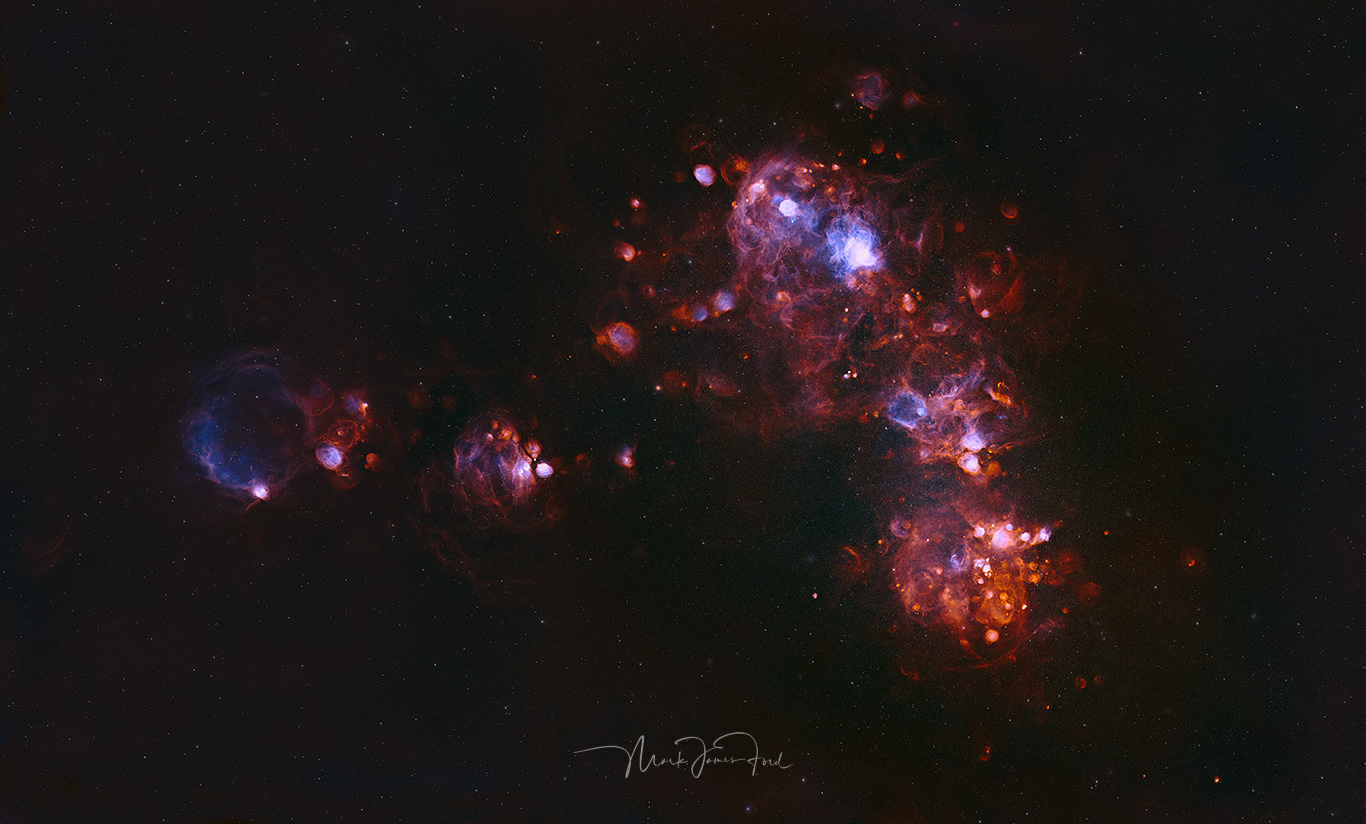Small Magellanic Cloud
The Small Magellanic Cloud (SMC) is a dwarf galaxy and one of the closest galactic neighbours to the Milky Way, lying around 200,000 light-years away in the constellation Tucana. Part of the Local Group of galaxies, the SMC is gravitationally bound to both the Milky Way and its larger companion, the Large Magellanic Cloud (LMC). The SMC, along with the LMC, has played a vital role in helping astronomers understand star formation, galactic evolution, and the interactions between galaxies.
The SMC is classified as an irregular dwarf galaxy, with a shape that’s less defined than spiral galaxies like the Milky Way. It has a visible size of around 7,000 light-years across, though its actual extent, including its faint outskirts, may stretch much farther. Unlike many galaxies, which display symmetrical arms or disks, the SMC appears disorganized due to gravitational interactions with the Milky Way and the LMC, which have pulled streams of gas and stars from it over millions of years.
The SMC is surrounded by extended streams of hydrogen gas, forming features like the Magellanic Stream, which connects the SMC to the Milky Way and the LMC. These tidal streams are thought to have formed as a result of gravitational interactions with both galaxies over millions of years.
The SMC is particularly active in star formation relative to its size. Unlike the Milky Way, which has spiral arms where star formation predominantly occurs, the SMC has scattered regions of intense star formation. These regions, illuminated by young, massive stars, glow brightly in ultraviolet and infrared light, making them observable across vast distances.
One of the SMC’s largest and most luminous star-forming regions, NGC 346 is a stellar nursery rich in young, hot stars. This region’s intense ultraviolet radiation from newly formed stars is shaping the surrounding gas, triggering further waves of star formation.
The SMC has a lower metallicity (fewer elements heavier than hydrogen and helium) compared to the Milky Way, meaning its stars and interstellar gas are relatively “metal-poor.” This lower metallicity is typical for dwarf galaxies and provides astronomers with a unique opportunity to study star formation in conditions that resemble those of the early universe, where heavy elements were less abundant. Because metals affect processes like star formation and the development of planetary systems, the SMC serves as a natural laboratory for observing how stars evolve and form under these conditions.
The SMC’s interactions with the Milky Way and the LMC are crucial to its evolution. These gravitational interactions have resulted in the transfer of material between galaxies, creating complex tidal structures like the Magellanic Stream—a long, trailing band of hydrogen gas connecting the SMC and LMC to the Milky Way. These interactions are believed to enhance star formation by compressing gas within the SMC, sparking new bursts of star formation as gas clouds collapse under their own gravity.
This particular rendition based only on Hydrogen-alpha (mapped to red/orange) and Oxygen-III (mapped to blue) emission data strongly emphasises the way the gas within the galaxy has been shaped by the evolving stars – bubble after bubble of expanding hydrogen gas – driven by the intense radiation of newly forming stars. Tendrils, delicately intertwined, mark the remains of one supernova after another, and, here and there, delicate wisps of oxygen in amongst a seething galactic cauldron.
The data was collected on location at Hakos Guest Farm in Namibia.
Celestron RASA 11
10Micron GM1000 HPS
Moravian C1X-61000 mono
Gain 2750, F2.2, 620mm
Total acquisition time: ca 10 hrs
